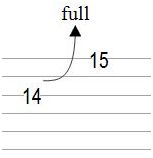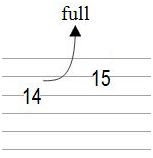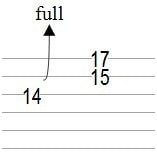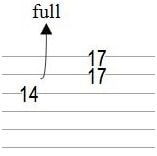By Tom Hess
Your opportunity for success as a guitar teacher is greater now than ever before. Why? Most guitar teachers these days would rather accept mediocre results in their teaching and teaching business growth than take the time to truly help their students. On top of that, even the most dedicated guitar teachers are clueless about what can really be achieved in their guitar teaching business. As a result, they are never able to accomplish great things for themselves or their students. However, since you are reading this article, you have a distinct advantage over everyone else in your local guitar teaching community who isn’t taking steps to become a better guitar teacher and further his/her business.
It’s actually a lot easier than you’d expect to become the leading guitar teacher in your local area, fill up your teaching schedule and develop a successful teaching business. To do it, you must first learn the main reasons why so many guitar teachers fail and how you can avoid the mistakes they make in order to achieve a better outcome.
These are the five biggest reasons why guitar teachers will never achieve success in their teaching businesses and the details for how ‘you’ can avoid their mistakes to become the leader for guitar instruction in your city:
Why Guitar Teachers Fail, Reason #1: Not Investing Much Time Into Growing Your Guitar Teaching Business
When you exclusively spend your time on building lesson plans, sorting through administrative tasks/payments, thinking of new materials and other smaller teaching tasks you will not become hugely successful. These things are certainly necessary to work on, however, you must also focus on building your guitar teaching business as a whole in order to become truly successful as a guitar teacher. If you neglect doing this, your guitar teaching business is likely to diminish (meaning you lose more students than you gain) over time. This is one of the main reasons why so many guitar teachers go out of business.
What You Need To Do Instead To Become The #1 Guitar Teacher In Your Area:
Invest time every week to work on building all areas of your guitar teaching business (in addition to working on general guitar teaching tasks). You should actively be working to find new ways to gain new students while retaining them longer, developing an effective referrals system, creating a solid teaching policy and putting together a great marketing strategy. On a piece of paper, write down your specific goals, detailing what you’d like to accomplish in the next several months to a year (or more). Then determine the steps needed to reach these goals and take action on them every week.
For help attracting tons of new students fast, test your approaches using this free assessment on the topic of getting more guitar students.
Use this assessment about how to build a guitar teaching business to become a more successful guitar teacher.
Why Guitar Teachers Fail, Reason #2: Copying Other Guitar Teachers
When you copy what other guitar teachers are doing, you are very unlikely to ever become highly successful. Here is why:
1. The majority of people teaching guitar are not successful. Therefore, when you copy the methods used by these people (either marketing or approaches to teaching students), you will only head down the same path of failure.
2. Copying guitar teachers who seem to be highly successful will not work either. This is because you do not understand the complete strategy behind what they are doing – you only see the individual tactics. Tactics are individual actions that one takes to achieve a result. For example: hanging up ads in a music store, making your website design more professional or sending out flyers in your area. On the other hand, a strategy is the ‘big picture’ thought process that connects everything together and reach specific short, medium and long term goals. A strategy is built into the foundation of a successful guitar teaching business and cannot be understood by simply observing isolated tactics.
3. When you decide to imitate other guitar teachers in your area you essentially remove any ‘unique’ qualities from your lessons. This turns guitar lessons into a kind of commodity, where the ‘cheapest’ lessons are the best. If you follow this mindset and try to undercut everyone else in your area you will (at best) end up with very unmotivated students who are not serious about making progress on guitar. This is because most students know that ‘you get what you pay for’ and associate cheap lessons with low quality lessons.
What You Need To Do Instead To Become The #1 Guitar Teacher In Your Area:
Don’t build your guitar teaching business by merely ‘guessing’ about what might work. Use the approaches that successful guitar teachers use:
- Get guitar teacher training to learn how to become a successful guitar teacher. This is the most effective method for developing your own unique business strategy while getting better results for your students.
- Rather than marketing yourself as a guitar teacher who teaches ‘all styles’, select a particular style and become the local guru in that style. This will put your name at the top of anyone’s list whenever they are looking for someone to help them learn that style. Additionally, students who want to learn a specific style are generally more serious than other students who only seek ‘general’ lessons.
- When determining the price for your lessons, charge AT LEAST a little bit above average. By charging ‘more’, your students will feel much more motivated to practice more frequently and improve because they are paying more for their lessons. Charging more helps keep them accountable to themselves because they don’t want to waste all the money they are spending.
Why Guitar Teachers Fail, Reason #3: Accepting Mediocre Guitar Teaching Skills
The best thing you should do if you want to develop a terrible reputation for being a poor guitar teacher and getting no results for your students is stop trying to improve your teaching skills. Whenever you sense that you are ‘going through the motions’, you know you are in need of improvement.
In all other industries (such as the medical industry as a single example), you would be stripped of your license if it was discovered that you haven’t been properly training to keep your qualifications high, or if you claimed to know how to do help people, but did not. Unfortunately, guitar teachers do not require licensing in the same way and many of them never learned how to teach (or teach simply through trial-and-error).
What You Need To Do Instead To Become The #1 Guitar Teacher In Your Area:
Understand that your guitar students are not paying you for anything other than RESULTS – their musical lives are in your hands. You will either help them become great musicians or hold them back causing them to struggle for many years before getting back on track with their goals. This is why you must always work to become a better teacher so you can give your students the best possible results.
Note: merely being a great guitarist or going to university to study music is NOT the same as actually learning ‘how to TEACH guitar lessons’, so simply having guitar playing skills is not a substitute for consistent training on how to become a successful guitar teacher.
Why Guitar Teachers Fail, Reason #4: Having A Poor Mindset About Earning Money From Teaching Guitar
How can you absolutely guarantee that you won’t earn good money teaching guitar? Answer: Believing that it is ‘wrong’ to want to make a huge profit (6 figures+) through guitar lessons. Another way to be unsuccessful at earning good money is to refuse to market your lessons – relying only on word of mouth. Many guitar teachers either feel it is wrong to make a lot of money teaching others and never take the right steps to promote their teaching businesses. Here is why this is a MASSIVE lose/lose for them and the students in their area:
You’ll struggle to earn enough money to get by since you won’t be taking the necessary actions to grow your business at a bigger level.
Guitar students in your local area will suffer because your belief system will cause you to build a business that prevents you from growing beyond a certain number of students. There are countless guitar players in your area who truly desire your help but will never get the opportunity to work with you due to your views. With this in mind, it is definitely realistic to want to teach 100+ students once you have the correct systems in place (and you can do so working 15 hours or less per week!). Watch this video about how to grow a guitar teaching business to learn more.
What You Need To Do Instead To Become The #1 Guitar Teacher In Your Area:
Take on the mindset that highly successful guitar teachers have about earning money. These teachers know that:
- By earning more money, they will gain the ability to re-invest what they make back into their business to benefit their students. When you earn more money as a guitar teacher, you can offer your guitar students many new benefits that you couldn’t before such as recording equipment, great quality rental instruments, bigger learning spaces, etc.
- To earn more money you need to become the greatest at what you do. The desire to developing a flourishing business needs to be part of the motivation for offering the greatest results to your students. This is why guitar teachers who get the best results for their students invest into a trainer who trains them to become a successful guitar teacher.
Once you fully understand that you have the power to totally transform the musical lives of your students, it becomes you duty to gain as many students as possible so you can help them achieve their musical goals.
Why Guitar Teachers Fail, Reason #5: Having Little Or No Passion For Guitar Teaching
You can have all the guitar teaching skill in the world but it will do you NO good if you don’t have passion for what you are doing. Without passion, teaching guitar for a living becomes the same as working a 9-5 day job (causing you to accept lower standards). Since working a ‘normal job’ does not feel rewarding enough to motivate you to improve, you are unlikely to take action to grow your guitar teaching business and become a better teacher. Result: you will inevitably fail. In addition, your guitar students will quickly pick up on your lack of enthusiasm and mirror it back to you (by not practicing, apply what you teach them, etc.).
On the other hand, the most successful guitar teachers have a very strong passion for teaching guitar. Although they DO teach guitar to make money, they also teach because it is something they truly enjoy doing. When you are passionate about teaching guitar, your students will notice and respond positively.
What You Need To Do Instead To Become The #1 Guitar Teacher In Your Area:
To grow a passion for teaching guitar, you need to identify your greatest ‘reasons’ for wanting to become successful at it. Think about the goals that teaching guitar at the highest level will achieve for you. When you understand your greatest reasons for teaching guitar, you can use your excitement for achieving your goals as a motivator for teaching. This will help you to both enjoy the process of teaching lessons as well as use your motivation to inspire your students. When your students are inspired on a consistent basis, they will naturally achieve much more.
What is the next step to take?
Once you understand the ideas discussed above, it’s time to start implementing what you’ve learned so you can become the leading guitar teacher in your area. By applying the points of this article into your guitar teaching business, you will become more successful than you could have ever imagined – all while helping your students become excellent guitarists and musicians.
About The Author:
Tom Hess is a highly successful guitar teacher, recording artist and the guitar player. He helps people from all over the world learn how to teach guitar. Visit his website tomhess.net to get free guitar teacher resources and to read more guitar teaching articles.
Tom Hess is our resident author, for other information including how to become an online guitar tutor go to http://www.internet-guitar-lessons.com/
![]()









